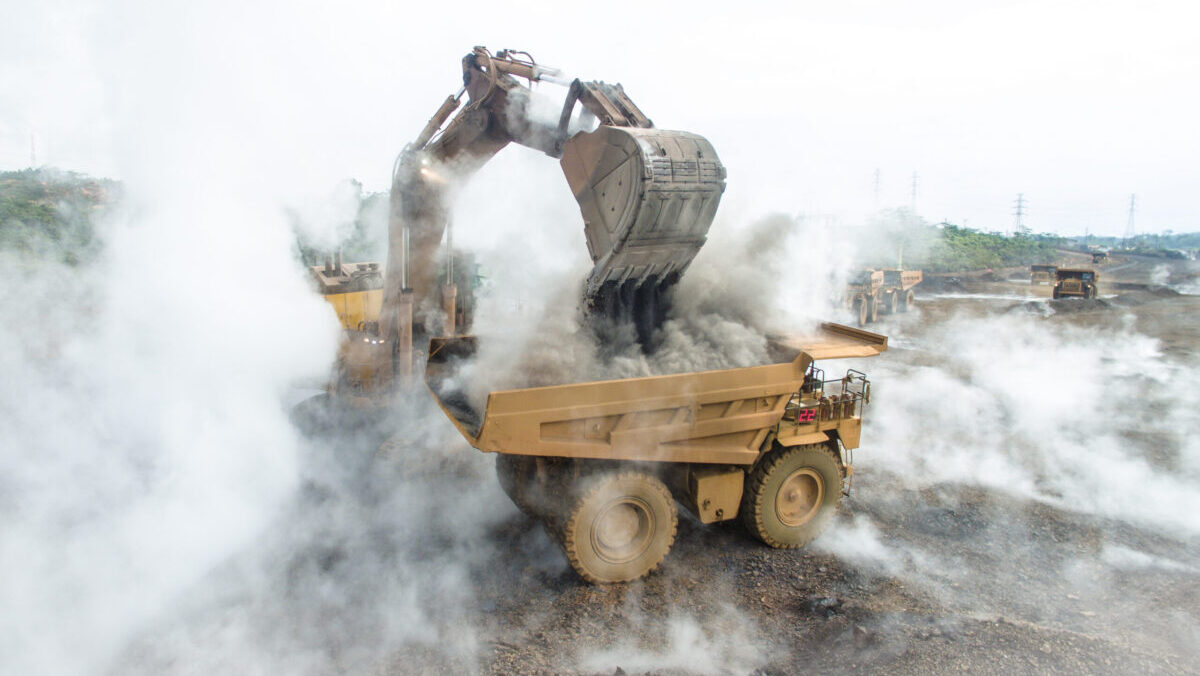S&P Global Ratings says Indonesia’s nickel dominance is here to stay
But a private equity firm which punted $45m on an Aussie exploration project in 2022 remains bullish after increasing its resource by 75%
Nickel is a minor commodity when it comes to the grand scheme of things — playing a smaller role in new energy technology than lithium, dwarfed for scale by bulks like coal and iron ore and lacking in the volume of players exploring for gold.
But it has become a symbol of the latest step in the trade war set against the backdrop of decarbonisation playing out between China and the West.
Backed by Chinese capital, Indonesia’s rapidly growing nickel sector has shown how important geology, technology and controlling the means of production is to the battle lines being drawn over critical minerals.
While the US and other western nations want to set up supply chains that avoid Chinese influence, they aren’t prepared to provide the subsidies that have given China and Indonesia the ability to supply at cheaper price points.
There is no green premia, at least not yet, with Andrew Forrest, owner of struggling WA nickel miner Wyloo Metals, again calling on the LME yesterday to make clear delineations between what he calls ‘clean and dirty’ nickel.
“If you’ve got dirty nickel in your battery systems, then you want to know about that because you don’t want to propagate that and you want the choice to buy clean nickel if you can. So the London Metal Exchange must differentiate between clean and dirty,” he said in a speech at the National Press Club.
S&P Global Ratings however, agrees with commentary from BHP (ASX:BHP) that the growth of Indonesia’s nickel supply chain and technological advancements that have turned its Class 2 nickel pig iron into battery grade nickel matte has brought about a permanent structural shift in the industry.
Why Indonesian producers won’t respond to cycle
Mining is a cyclical business and nickel is more volatile than most commodities.
Australian producers have, for the second time in a decade, instituted a major curb of production capacity. First Quantum has, for instance, scaled back its Ravensthorpe mine by pausing mining and only processing stockpiles.
It comes just 7 years after FQM last halted operations in 2017. Wyloo’s Kambalda mines were reopened by Mincor in 2022, a year ahead of its $760 million takeover.
From May they will go into care and maintenance just eight years on from Mincor’s original shutdown in early 2016.
S&P primary credit analyst Minh Hoang said Indonesia is expected to add 300,000t of capacity in 2024 against an uncertain demand profile with China’s steel production and EV growth rates expected to moderate.
While many Indonickel producers are marginal just like their Aussie counterparts, a few factors mean they are likely to be less affected by an LME price sitting at a touch over US$17,000/t — compared to over US$30,000/t in early 2023.
“Make no mistake, lower nickel prices have hit the profits of Indonesian nickel pig iron and nickel matte producers. Indonesia is cutting some planned expansion this year to conserve cash and other delays are possible,” S&P’s Cathy Holcombe wrote.
“However, Indonesian producers predominantly trade against Shanghai’s lower-grade nickel pig iron (NPI) benchmark for stainless steel production and are inherently less sensitive to the key London exchange (LME) prices that affect class-1 primary nickel.
“While Indonesian mines are generally ranked in the third quartile or worse of the global cost curve, lower capital and maintenance costs underpin Indonesia’s lower all-in sustaining cost position relative to peers. The pace in which downstream development has taken place has also caught the market by surprise.”
S&P believes the recent boom in nickel prices, delivering strong profits for incumbents lower on the cost curve like Glencore and Vale, will buy them time in the current pricing environment.
“Balance sheets are strong from price rallies over the previous two years. More production cuts are possible, but risks are pegged firmly to the downside.”
But Indonesia’s move downstream has given it an edge, pulling international players like Nickel Industries (ASX:NIC), Vale and Eramet to its shores alongside Chinese players like Tsingshan — the stainless steel giant which developed to process to turn NPI into nickel matte.
“We think Indonesia’s nickel dominance is likely here to stay,” Holcombe wrote.
Early stage nickel plays remain hopeful
Not that there aren’t those confident Australian nickel will see its day in the sun.
Some developers and explorers, despite the weak sentiment, say they would be profitable at current prices or prices not too far beyond contemporary levels.
READ: BHP joined the rout… so where are the green shoots for nickel now?
WA mining legend Peter Cook also made a surprising $300,000 bet on a bottom in the nickel market, upping his stake in NiCo Resources (ASX:NC1), owner of the remote and long undeveloped Wingellina project in WA, to 10.88%.
READ: Skin in the game: Which ASX directors are backing a nickel price recovery?
One of the strongest signals of the peak for nickel came in late 2022 when Kinterra Capital — a Toronto-based private equity firm — punted $45 million to purchase nickel explorer Cannon Resources.
Since the acquisition, Kinterra revealed today it had increased resources by 75%, with contained nickel tonnages at the Fisher East project near Wiluna where Rox Resources (ASX:RXL) originally made a high grade discovery in 2012 now 77% higher.
The project boasts a JORC resource of 13.1Mt including 5.2Mt of indicated resources at 1.99% nickel and 7.9Mt inferred at 1.69% Ni.
It shows the role international investors will have to play to develop IRA compliant nickel projects in Australia. Kinterra also owns a company called NiVolt Technologies, which wants to build a vertically integrated battery materials facility in Quebec.
Testwork has shown it can convert nickel sulphide concentrate into mixed hydroxide precipitate, an input in battery nickel precursor.
“We realise this is a difficult time in the Australian and global nickel markets, but we believe there is a real opportunity for low cost, ESG-friendly projects with the right downstream and government support to contribute to secure supply chains for the EV market,” Cannon VP and project director Chris O’Brien said in a statement.
“We remain focused on advancing Fisher East through dedicated technical studies, trade-off development, and comprehensive environmental and stakeholder stewardship. This work will position Cannon for strategic and informed future investment decisions.”
The post Monsters of Rock: S&P says Indonesia’s grip on the nickel market won’t end in a hurry appeared first on Stockhead.






















